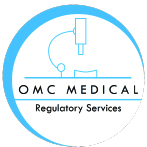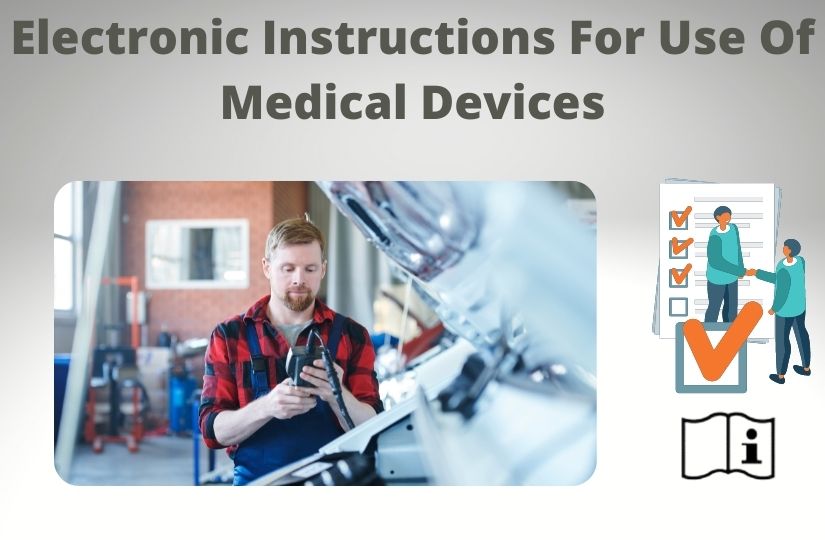Commission Regulation (EU) No 207/2012 on electronic instructions for use of medical devices was published on 9 March 2012 and came into effect on 1 March 2013. There are 10 articles in this regulation.
It establishes certain requirements for the “instructions for use” for the user that must be noted by the manufacturer of the device, to ensure proper and safe use of the device as well as to know about the precautions while using the device.
It is meant to reduce potential risks as much as possible and to ensure customers have unconditional access to see the instructions for use of medical devices.
The Regulation establishes the conditions under which the instructions for use of the following medical devices covered under Directive 90/385/EEC and Directive 93/42/EEC may be provided in electronic form, namely:
- Active implantable medical devices and related accessories
- Implantable medical devices and their accessories
- Fixed installed medical devices
- Medical devices and their accessories
- Stand-alone software
In Annex I, Chapter III, 23.1(d) of the EU MDR , it says that Class I and IIa devices do not require instructions for use if they can be safely used without instructions.
Manufacturers have to provide eIFUs for the above devices when they are intended for exclusive use by professional users and the use by other persons who are not reasonably foreseeable.
The Regulation allows eIFUs to be provided both in electronic form as well as in paper form with specific requirements identified for each scenario.
Manufacturers of the devices mentioned before who provide the instructions for use in paper form have to undertake a risk assessment which will have to be documented.
The Risk assessment will cover on the knowledge and experience of the intended users, the characteristics of the environment in which device have to be used, the electronic resources that is required for the use of the device, the performance of safeguards to ensure that the electronic data and content are protected from tampering, the safety and backup mechanism, etc.
The risk assessment have to be updated regularly on post market data and should demonstrate that providing eIFUs maintains or improves the level of safety compared with paper form.
6 Electronic Instructions Tips For Use Of Medical Devices
The regulation also have several obligations that the manufacturer must follow ensure patient safety and overcome any associated risks:
- Provide eIFUs for the devices in all the EU states where the device is brought into the market. It is not needed for devices if justified in the risk assessment of the device.
- A paper copy of the IFU should be provided within 7 days to the user with no additional cost.
- Provide a leaflet which contains the information on foreseeable medical emergency situations when using the device, or mention it on the device itself.
- If the instructions for use of the device have been revised for safety reasons, make sure that the user is informed
- Ensure IFUs are available for at least 2 years after the end of the expiry date of the device that was last produced or 15 years after the last manufactured device
- Create special Web site requirements for protection against hardware and software to minimize server downtime and display errors.
The regulation requires the notified bodies to review eIFUs for all devices except for Class I devices, and verify compliance with applicable requirements of the eIFU regulation as a part of the conformity assessment procedure.
The Notified body reviews would be based on a sampling method appropriate to the device classification and complexity.
As indicated in the Regulation, the manufacturer should also clearly indicate on the packaging of the device how to access the instructions for use in electronic form. They should provide information on how to access the instructions for use in electronic form.
FAQs
Where can the eIFU be kept? What is the compliance for the website ?
The manufacturers must ensure that the eIFU is kept updated based upon the European MD and IVD websites
The website on which the manufacturer will upload the contents of eIFU should follow the below standards:
- The website should have proper functioning capability
- The patients should be able to retrieve the information of eIFU in the language that is easily understood by them.
- Contents of the eIFU should be identical to that in the paper IFU
- The contents of eIFU should be available in the read-only format (e.g. pdf)
- The website must be designed in such a way that it is kept secured from any hardware and software intrusion.
What are the benefits of having EIFU rather than Print?
- Reduction of printing and managing the paper IFUs thus reducing the related costs.
- There are no restrictions on size limitations of the IFU so the eIFUs can have legible fonts and more effective layouts, thus improving the user experience.
- eIFUs can be quickly changed or updated; improvements can be readily made.
- Unlike the paper IFUs, eIFUS are not subjected to wear and tear.
- Reduction of paper waste, which is environment-friendly as well as cost-effective.
- Videos and animations are used which explain the operation of the device better to the users, than written material
What are the labelling requirements for use of eIFU ?
Following are the labelling requirements the manufacturer must fulfil:

- Users must be provided with clear instructions on how to obtain the eIFUs.
- The methods through which the user can request their paper IFU copy should be informed.
- The eIFU must be available in multiple languages so that the patients can access the information in their native language
- A harmonized and comprehensible symbol should be used for indicating eIFU use for the label.







